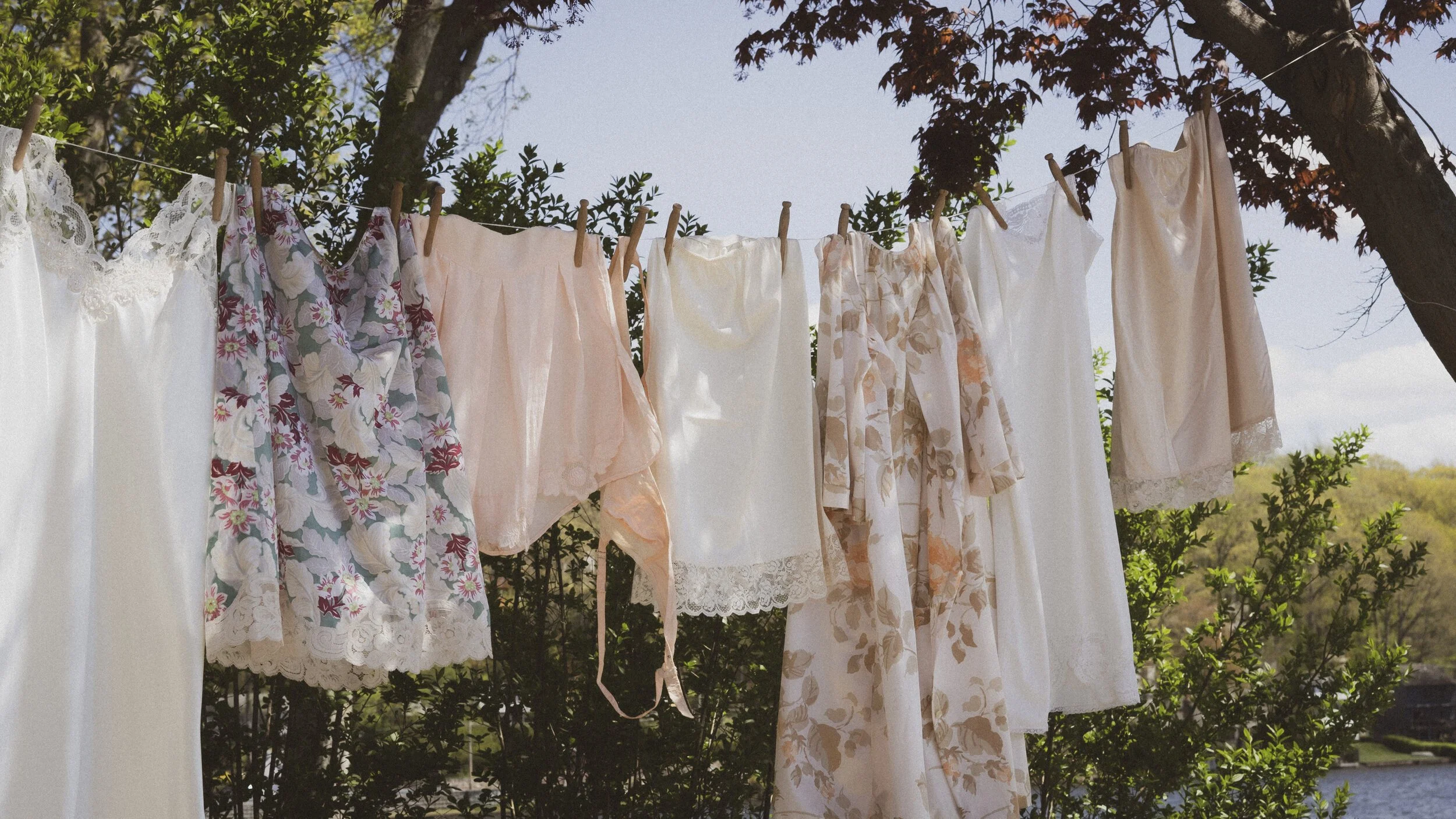Sustainability LOG 02: A Guide To Greener Garment Care
by georgina annenberg, brand sustainability expert
While buying second hand clothing is a great way to reduce your environmental impact, it is also very important to take care of your garments so that they can continue to last for years to come.
Well looked after clothing may have multiple lives and wearers, which is something our helen the brand team cares deeply about. the greater number of times a garment is reused, the more sustainable it becomes. its many uses start to outweigh the social and environmental impacts created from the raw material, production and transport phases. importantly, it also avoids the landfill or even recycling plant (yes this has impacts, too).
Caring for your garments will depend on the fabric composition. however, as a general rule, we urge you to hand-wash your items wherever possible. this is because older items of clothing can be more delicate. additionally, machine washing your clothing uses more emissions and leads to microfiber pollution.
Microfibers are the tiny specks - 5 mm or smaller - that get released from your clothing during washing. they are released from all garments; natural (like cotton, linen, silk, wool) and synthetics (like polyester, nylon, viscose, elastane). it’s not a small number of fibers; it has been reported that 100,000-700,000 fibers can be released per 13 lbs load of washing.
Microfibers make their way from your washing machine and dryers, to local water bodies where they pollute the environments and come into contact with aquatic life. small organisms confuse microfibers with food, and the fibers move up the food chain through biomagnification or bioaccumulation. humans ingest microfibers through seafood, water, salt, beer and many other products.
Most of the research has looked at synthetic microfibers. these are of particular concern, as they are plastic derived. plastic fibers are made up of harmful chemicals, such as bpa and phthalates. they also absorb free-floating contaminants, such as methylmercury and pcbs. this creates a toxic cocktail when ingested by marine life, leading to disruption in the lymphatic and endocrine systems, poor feeding habits, low predation and early death (to name a few). the effect on humans is largely under-studied, yet researchers believe that the microscopic microplastics could translocate to one’s tissues and cause inflammatory and gut-health issues.
Natural microfibers (i.e. ones derived from cotton and wool) are hypothesized to be less harmful, as they are not made up of plastic. yet scientists still don’t know how dyes and other finishing processes may affect animals and humans and more research needs to be done.
if you’d like to learn more about microplastic pollution, click here.
Right. Back to garment caring.
Gentle, natural detergents are optimal for second-hand and vintage items. we urge you to avoid anything heavy, as this could deplete the garment’s quality over time. most items suit lukewarm or cool water, but check out our garment care guide for certainty.
we love the thoughtfully created products from the laundress, as they have produced natural, gentle concoctions for all fabric types, making it really easy to wash from home and avoid the dry cleaners. however, we have also provided some diy detergents and bleaches, which can be found in our garment care guide.
While it may be necessary to send your garments to the dry cleaners, more often than not, handwashing will work just fine. dry cleaners tend to use harmful, carcinogenic chemicals that pollute the air and can lead to cancer and neurological issues. 70% of dry cleaners are still using these chemicals, so check if there are green cleaners near you, should you need to use them.
If you are unable to hand-wash and need to machine wash, we encourage you to still keep your synthetic items aside, and only wash your garments with natural compositions. however, if machine washing your synthetics is necessary, then it is preferable to use microfiber preventative products, like the guppyfriend (a garment wash bag), the cora ball (a nano-ball, which catches 25% of released fibers), or an attachable filter, like the one from filtrol or planet care (a more user-friendly option). using a simple, mono-filament bag may also be effective in reducing microplastic pollution.
Dry your clothes naturally wherever possible, as tumble drying releases fibers and creates excess emissions. it can also shrink or damage your clothing. if you do need to use the tumble dryer, we suggest opting for reusable, wool balls, as opposed to disposable dryer sheets. the balls increase drying time and also help reduce static.
We suggest steaming your items if they are wrinkled, or using the steam setting on your iron. some garments like cotton shirts and pants are fine to iron normally, but we’d suggest you place a cloth between the iron and garment to avoid scorching.





